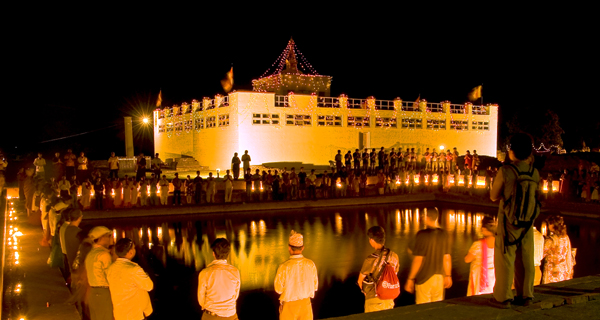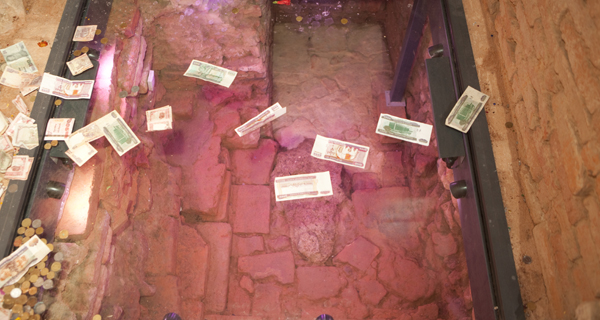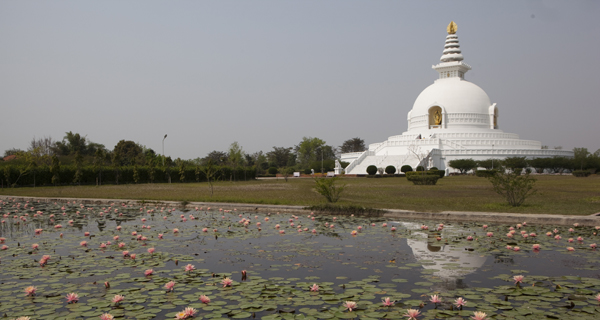Nestled in the serene plains of Nepal’s Terai region, Lumbini is a place where history, spirituality, and tranquility converge. Recognized as the birthplace of Siddhartha Gautama, who later became Lord Buddha, Lumbini is a UNESCO World Heritage Site and a pilgrimage destination for millions of Buddhists and spiritual seekers worldwide. Whether you’re a history enthusiast, a devout pilgrim, or a traveler seeking peace, Lumbini offers a transformative experience.
In this blog, we’ll explore the spiritual significance, top attractions, and practical tips for visiting this sacred land.
Lumbini’s history dates back to 623 BCE, when Queen Mayadevi gave birth to Siddhartha Gautama under an ashoka tree in the Sacred Garden. This event marked the beginning of a spiritual journey that would eventually give rise to Buddhism, one of the world’s major religions.
The significance of this place was mentioned in many historical and literature writings. Some record include the description of Lumbini by Chinese monks: Seng tsai, Fa hien and Hiuen Tsang from 2nd, 5th and 7th century respectively. It was also mentioned by King Ripu Malla.
Following these hints, a team of archaeologists, under the leadership of British archaeologist Alois Anton Führer and General Khadga Shamsher, rediscovered Lumbini in 1st December 1896. The identification of the Ashoka Pillar, erected by Emperor Ashok in 249 BCE, confirmed Lumbini as the birthplace of the Buddha. Prior to this discovery.
Following the 1896 discovery of the pillar and the surrounding garden, extensive excavations and research were conducted, uncovering ancient ruins and structures. Among these findings were the remains of a monastic complex, indicating that the area had once been a flourishing religious hub. The excavations revealed relics and architectural remnants dating back to the Maurya and Kushan periods, further reinforcing Lumbini's historical and religious importance.
In 1967, U Thant, the then Secretary-General of the United Nations, visited Lumbini and proposed its development as a major pilgrimage center. Subsequently, the United Nations established the International Lumbini Development Committee, comprising representatives from 15 countries. Renowned Japanese architect Kenzo Tange was commissioned to design a master plan for the site, which was officially approved in 1978.
In recognition of its profound significance in the history of Buddhism and its spiritual and cultural importance as the birthplace of the Buddha, Lumbini was inscribed as a UNESCO World Heritage Site in 1997 preserving its cultural and spiritual heritage for future generations. . This designation has played a crucial role in preserving and promoting the site for future generations, ensuring its legacy endures.
After winning the battle of Kalinga, the Mauryan emperor turned himself into a Buddhist and visited Lumbini and erected a pillar to commemorate the exact birthplace of Gautam Buddha in 249 BCE. The ashoka pillar was later rediscovered in December 1896, is a significant historical artifact that played a crucial role in confirming the site as the birthplace of the Buddha
The pillar bears an inscription in Brahmi script, which explicitly states that Ashoka visited Lumbini and honored it as the birthplace of Siddhartha Gautama, the Buddha. The inscription reads:
That translates to “after ruling for twenty years, the beloved of the gods, Emperor Ashoka, personally visited this place. Since this is the birthplace of Lord Buddha, it is considered a sacred site. A pillar was erected at this holy place, and an inscription was engraved, stating that Lord Buddha was born here. The lord being born here in Lumbini, the tax for this place has been reduced to one-eighth”
The story of Buddha’s life is a profound journey of enlightenment, sacrifice, and wisdom. Here’s a glimpse into his life, from birth to nirvana.
Lumbini is home to numerous sacred sites and attractions that reflect its rich history and spiritual essence. Here are the must-visit places:
The Mayadevi Temple is the heart of Lumbini, marking the exact spot where Buddha was born. Inside the temple, there is the Nativity Sculpture, the marker stone, and ancient ruins from various historical periods. The bricks inside the temple date back to third century BC indicating the reign of Emperor Ashoka. One can enter the temple with silence but is not allowe to take any photographs.

The ruined statue demonstrate how Maya Devi hold a branch of a tree with her right-hand seeking support while giving birth. There is Sister Gautami Prajapati nest to her and the newly born prince standing on two legs over a lotus pedestal. This statue dates back to 4th-century created by the Mathura School of Arts.
The 70cm*40cm*10cm conglomerate marks the exact spot where prince Siddhartha was born. The Marker Stone was found in the same distance and direction as mentioned by Hiuen Tsang in his books.

Surrounding the Mayadevi Temple, the Sacred Garden is a peaceful area perfect for meditation and reflection. The garden is dotted with ancient stupas, monasteries, and the iconic Bodhi Tree.
The southern part of the garden has a pond called Puskarini where after taking a bath and processing 25 steps to the north, gave birth to prince Siddhartha.
The Monastic Zone is divided into the East Monastic Zone and West Monastic Zone by the 1.4 km long Central Canal. This zone has monasteries and institutions and monasteries that showcases unique architectural styles and cultural influences.
This zone is for seven Theravada Buddhist monasteries and one Vipassana meditation center. These are:
The Nipponzan world Peace Pagoda, built by Japanese, is a stunning white stupa symbolizing harmony and peace.

This perpetual flame, lit in November 1986, serves as a powerful symbol of everlasting world peace, reflecting the timeless teachings of the Buddha. It was kindled to mark 1986 as the International Year of Peace and is situated at the southern end of the canal. The flame, originally brought from the United States, represents a global commitment to fostering peace and harmony across nations.
25m to the east of The Eternal Peace Flame, there lies the Peace Bell that was set there on 23may 2005 as a homage to the Buddha, Dharma and Sangh.
The Lumbini Museum houses a collection of artifacts, manuscripts, and exhibits that provide insights into the life of Buddha and the history of Buddhism.
The Lumbini Master Plan, which covers an area of 1x3 square miles, is oriented along the north-south axis. Each zone covers an area of approximately one square mile:
© Copyright Gateway Adventure Treks and Expedition Pvt. Ltd., 2025 All Rights Reserved